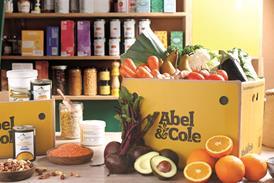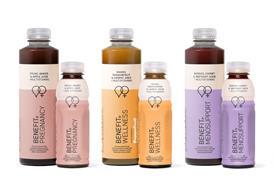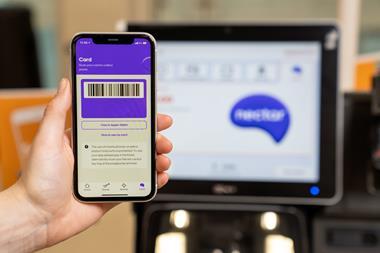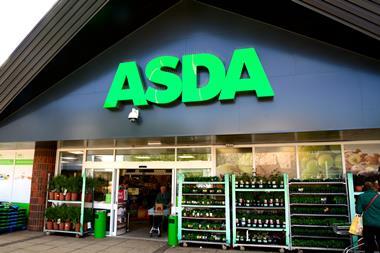Indulgent treats retain their place in the lunchbox, whether chocolate biscuits or yoghurts, but many lines now come with the appeal of convenient formats or low fat credentials
Sweet treats are abundant in shops and they can prove all too tempting for people who aspire to eat more healthily, says Claire Nuttall, director of consumer brands at brand agency Dragon. “We’re offered more treats and many sweet things as snacks. The muffin is a good example - it’s now called a snack when it used to be eaten purely as a treat.”
TNS data shows 29% of lunchboxes include biscuits and 12% cakes and pastries. Fox’s Biscuits says mums are happy to put a chocolate biscuit bar in their children’s lunchbox, as part of a balanced diet. And they prefer a chocolate biscuit bar to a chocolate countline because they’re usually smaller and deliver fewer calories and less fat.
Mothers themselves enjoy a bit of indulgence once in a while, which is why Fox’s has relaunched Echo as the ‘posh chocolate biscuit bar for women’.
But health is also on Fox’s agenda. The company says it is enjoying great success with its Officially Low Fat range. Simon Smith, marketing director, says this is because ‘it does what it says on the tin’ - all products contain less than 3% fat per 100g. “If you eat Officially Low Fat lines, you are not on a regime, you are eating low-fat food that tastes good,” he says.
Another low fat line, Quaker Snack-a-
Jacks, has been boosted by a new Chocolate Delights variety. These contain real chocolate but have less than 10% fat.
According to Quaker, they are selling fast in the grocery multiples - in Asda they doubled Snack-a-Jacks Jumbo’s volume sales, and the company says that all these sales are incremental.
Yoghurts and fresh cream desserts appear in 15% of lunchboxes. Yoghurts are faring particularly well, thanks to their health credentials and the huge popularity of probiotics.
Leading yoghurt manufacturer Müller is helping parents get their kids lunchboxes right via a leaflet entitled Great Tips for Healthy Lunchboxes. This includes menu suggestions for two weeks - and not every one includes a yoghurt.
Yoplait Dairy Crest’s Petits Filous, including Frubes, claims leading children’s chilled yoghurts and dessert brand status, with a 29% value share, and sales up 14.1% year-on-year.
But as children are notoriously fickle, even the bestseller has to keep one step ahead. The latest activity for Frubes is a limited edition ice cream-style line-up.
And as it is the the time of year when lunchboxes are scarce because of the school holidays, a television campaign aiming to drive sales of Frubes in the summer is running.
Pauline Vicente, product manager for Frubes, says: “The Frubes Frrrreezing Campaign is designed to show that Frubes can be frozen and then eaten as delicious ice pops or put safely in the lunchbox to be cool at lunchtime.”
Ambient pot desserts do well as lunchbox lines, simply because they do not spoil when kept out of the fridge. Premier Foods, the company behind Ambrosia desserts, reports that children’s lunchboxes typically feature four different individual desserts per week (two at a time, twice a week) with girls proving to be the biggest consumers.
Sweet treats are abundant in shops and they can prove all too tempting for people who aspire to eat more healthily, says Claire Nuttall, director of consumer brands at brand agency Dragon. “We’re offered more treats and many sweet things as snacks. The muffin is a good example - it’s now called a snack when it used to be eaten purely as a treat.”
TNS data shows 29% of lunchboxes include biscuits and 12% cakes and pastries. Fox’s Biscuits says mums are happy to put a chocolate biscuit bar in their children’s lunchbox, as part of a balanced diet. And they prefer a chocolate biscuit bar to a chocolate countline because they’re usually smaller and deliver fewer calories and less fat.
Mothers themselves enjoy a bit of indulgence once in a while, which is why Fox’s has relaunched Echo as the ‘posh chocolate biscuit bar for women’.
But health is also on Fox’s agenda. The company says it is enjoying great success with its Officially Low Fat range. Simon Smith, marketing director, says this is because ‘it does what it says on the tin’ - all products contain less than 3% fat per 100g. “If you eat Officially Low Fat lines, you are not on a regime, you are eating low-fat food that tastes good,” he says.
Another low fat line, Quaker Snack-a-
Jacks, has been boosted by a new Chocolate Delights variety. These contain real chocolate but have less than 10% fat.
According to Quaker, they are selling fast in the grocery multiples - in Asda they doubled Snack-a-Jacks Jumbo’s volume sales, and the company says that all these sales are incremental.
Yoghurts and fresh cream desserts appear in 15% of lunchboxes. Yoghurts are faring particularly well, thanks to their health credentials and the huge popularity of probiotics.
Leading yoghurt manufacturer Müller is helping parents get their kids lunchboxes right via a leaflet entitled Great Tips for Healthy Lunchboxes. This includes menu suggestions for two weeks - and not every one includes a yoghurt.
Yoplait Dairy Crest’s Petits Filous, including Frubes, claims leading children’s chilled yoghurts and dessert brand status, with a 29% value share, and sales up 14.1% year-on-year.
But as children are notoriously fickle, even the bestseller has to keep one step ahead. The latest activity for Frubes is a limited edition ice cream-style line-up.
And as it is the the time of year when lunchboxes are scarce because of the school holidays, a television campaign aiming to drive sales of Frubes in the summer is running.
Pauline Vicente, product manager for Frubes, says: “The Frubes Frrrreezing Campaign is designed to show that Frubes can be frozen and then eaten as delicious ice pops or put safely in the lunchbox to be cool at lunchtime.”
Ambient pot desserts do well as lunchbox lines, simply because they do not spoil when kept out of the fridge. Premier Foods, the company behind Ambrosia desserts, reports that children’s lunchboxes typically feature four different individual desserts per week (two at a time, twice a week) with girls proving to be the biggest consumers.


















No comments yet